Sun Tzu Cultural Park
Sun Tzu Cultural Park
Sun Tzu Cultural Park is located in the East New Area of Guangrao County. It has been listed in the "four batches" key dispatching and promotion projects of the Yellow River Delta High Efficiency Eco-economic Zone and Shandong Peninsula Blue Economic Zone, with a planned total area of 1300 mu. Sun Tzu Cultural Park is based on Sun Tzu Culture, aiming at promoting the Bingsheng Culture, adhering to the planning and design concept of "people-oriented, ecological harmony, highlighting characteristics and cultural integration", and according to the national 5A level tourist attractions, national ecological tourism demonstration areas and national level tourist resorts standard construction of leisure holidays, tourism, business services, religious pilgrimage, popular science education. Functions as a whole comprehensive tourist resort.
Survey of scenic spots
In order to carry forward Sun Tzu culture, Guangrao County has planned and constructed Sun Tzu Culture Tourist Area. Sun Tzu Cultural Tourist Area is a comprehensive tourism resort based on the comprehensive development of Sun Wu Lake, according to the national standard of ecotourism demonstration area and tourist resort area, and according to the functional orientation of "ecology, tourism, culture and city", which integrates leisure vacation, tourism, business and trade services, religious pilgrimage and popular science education. It has been listed in the tourism project of the Yellow River Delta High Efficiency Eco-economic Zone, and has been assessed as "National 4A Class Tourist Scenic Spot".
Among them, Sun Tzu Cultural Park is the core scenic spot of Sun Tzu Cultural Tourist Area. It is also the base to inherit and carry forward Sun Tzu Culture. It is developed and constructed according to the "one axis, two belts and six zones" planning layout and the national 5A standard. One axis is the axis of the landscape, which takes Bingsheng Mountain as the central axis to display Sun Tzu's culture; two zones are the high-quality ecological landscape belt and the main tour ring road; six zones are Bingsheng Palace, weapons exhibition area, water battle area, siege deduction area, speed experience area and children's playground.
natural condition
geographical position
Sun Tzu Cultural Park is located in the north of the central part of Shandong Province and the south of Dongying City, with abundant tourism resources around it. The Yellow River Estuary Ecotourism Area of Dongying District in the north, Linzi in the south, Weifang Ecological Expo Park in the east, Xingguo Temple in Boxing County in the west, Laizhou Bay in the northeast and Yunmen Mountain Scenic Area in Qingzhou City in the southeast.
climate
Sun Tzu Cultural Park is located in the temperate zone and belongs to the monsoon climate. There is no obvious difference in the climate in the area. The climate is characterized by the same season of rain and heat, strong continentality (continental degree 66.4), alternation of summer and winter, and distinct seasons. From March to May in spring, the temperature warms up quickly, the precipitation is less, the wind speed is high, and the climate is dry. Summer is June to August, with high temperature, high humidity, concentrated precipitation and hot and humid climate. Autumn is September to November. The temperature drops sharply, the rainfall drops sharply and the weather is high and cool. Winter is from December to February. Rain and snow are scarce and cold and dry. The annual average sunshine hours in China are 2234.0 hours and the annual maximum sunshine hours are 2881.4 hours. The annual average temperature is 12.3 C, the highest is 18.8 C, and the lowest is 6.8 C. The extreme maximum temperature is 41.9 C, and the extreme minimum temperature is - 23.3 C. The annual average precipitation is 587.4 mm, mostly concentrated in June to September. The main wind direction for the whole year is Southeast wind. The wind direction varies significantly with the seasons. In winter, northwest wind blows more; in spring and summer, southeast wind blows more; in early autumn, southeast wind blows more; in late autumn, northwest wind blows more. The frost-free period is 198 days, the frost-free period is around October 21, the frost-free period is around April 6.
Animal vegetation
The main aquatic animals in animal resources are fish, shrimp, shellfish, hairy crab and so on. Livestock and poultry include horses, cattle, sheep, chickens, dogs, pigs, etc. there are more than 10 wild animals including hare, hedgehog, weasel and so on. Birds have sparrows, duck orchids, magpies, woodpeckers, etc.
The main food crops in plant resources are wheat, maize, soybean, millet, cotton, peanuts, sesame and so on. Vegetables include Chinese cabbage, radish, garlic, eggplant, pepper, cucumber, leek, onion, celery, tomato and more than 40 kinds. There are 93 kinds of trees (including varieties), mainly poplar, willow, locust, elm, Tung and so on. There are nearly 30 kinds of economic trees, such as apple, date, peach, apricot, mulberry, grape, hawthorn and pear. Aquatic economic plants mainly include reed, cattail, lotus root and so on. There are 284 kinds of medicinal herbs, such as Plantagon Seed, Dandelion, Leonurus, Rhizoma Cyperi, Yinchen, Lycium Barbarum, Fructus Cnidii, etc. In addition, the development of ginkgo, ginseng fruit and other planting industries, and the introduction of Brazilian wood, Chinese fir, Dutch tulip and other flowers and trees.
Historical culture
Sun Tzu Cultural Park is located in Guangrao County, Shandong Province. Guangrao County is located in the core area of Shandong Peninsula Blue Economic Zone in the Yellow River Delta, which is one of the top 100 counties in the whole country. Guangrao is from Qinshixian County. It was called Le'an, Qiancheng, Langhuai and Juding in ancient times. It has a long history and splendid culture. It is the birthplace of Sun Wu, Lv Opera and the origin of Qibi. Guangrao County is rich in ancient cultural relics and tourism resources, including "Le'an Old Town Site", "Guandi Temple Hall", "Bai Beitai Site" and "Fu Jia Site", which have been assessed by the United Nations Geographical Names Organization as a thousand-year-old county.
Sun Wu, Le'an of Qi State, who is now from Guangrao County, is the only saying in history. From Ouyang Xiu's New Tang Shu Premier's Genealogy Table in the Song Dynasty, Deng Mingshi's Ancient and Modern Name Book Dialectics, to Sun Xingyan's Preface to Sun Zi's Art of War in the Qing Dynasty, Sun Yongzhuan's Biography of Shangshu in the Wei Official Department, and the Preface of Sun Shi's Genealogy in Yanghu Lake in the Qing Dynasty. The newly discovered Tang Dynasty "Zhengguan Clan Chronicle" and epitaphs such as Sun Chuyu, Sun Qi and Sun Renlin further confirm that the Le'an County in the Pre-Qin Dynasty and the descendants of Sun Wu, who live in Le'an County in Qingzhou of the Eastern Han Dynasty (the origin of the surname of Sun's County), are the same family as the descendants of Sun Wu on the same ground. Through the textual research of historians, the same ground where this eminent clan lives is now Guangrao County. Sun Wu was also included in Le'an County Chronicle compiled in Qingzhou in 1918 and Guangrao County Chronicle Revised in 1936. The newly compiled "Shandong History" and "Cihai" are reflected in the documents. The records on the ancient tombstones such as the unearthed "Epitaph of Sun Yu" can also confirm the correctness of Guangrao's theory of "Sun Tzu's Hometown". More and more historians and military scholars agree with the theory of Guangrao. In March 2012, the descendants of the Sun clan of Le'an in eight provinces and cities gathered in Guangrao to explore their ancestors. In May 2012, Mr. Sun Guilin of Tianjin and others compiled the General Spectrum of the Chinese Le'an Sun clan, which shows that Guangrao is the ancestral place of the Le'an Sun clan and the birthplace of the military sage Sun Wu. In 2013, Dr. Sun Suifang, the granddaughter of Dr. Sun Yat-sen, descendant of Sun Wu, went to the Sun Wu Temple in Guangrao to worship his ancestor Sun Wu, and donated a bronze statue of Sun Yat-sen in Guangrao County.
Characteristic landscape
Summary
Natural Landscape: High-quality landscape belt (West Landscape Belt - Bingsheng Heritage), which reflects Sun Wu's life, includes Paradise Garden, Enze Garden, Fishing Garden, Root-seeking Garden, etc.
Humanistic landscape: Bingsheng Palace, 13th Bridge of Art of War, Bingshengtian (Outer Square), Spring and Autumn Old Town, Wushu Heritage (Weapon Display Area), Siege Deduction (Siege Deduction Area).
Amusement facilities: Qianli attack Chu (speed experience area), Zhile children's amusement area (children's amusement area). Including 21 recreational equipment at home and abroad, including roller coaster, pendulum, space shuttle and other three top foreign recreational facilities, XD film, magic theater and other high-tech projects.
Main attractions:
Soldier Sacred World-Outer Square
Bronze Car and Horse Sculpture: The sculpture, in the traditional art form of carriage and horse, symbolizes the idea of "welcoming" and is placed on the square outside the Sun Tzu Cultural Park, welcoming guests from all directions.
Drum Scenic Wall: The ancient military book "Military Affairs" mentioned that "words do not hear, so it is the golden drum". Four groups of golden drum centers are arranged on both sides. The diameter of the big drum is 4 meters. The front of the big drum is carved with "soldiers", "saints", "heaven" and "under". It symbolizes Sun Tzu's supreme position in the military and is also the name of the Outer Square. On the back, the theme is "wind, forest, fire and mountain", which symbolizes the military realm of "Sun Tzu's Art of War" that "its speed is like wind, its speed is like forest, its aggression is like fire, and its motionlessness is like mountain".
"Potential" sculpture: the world-famous "Mabius Ring" sculpture is adopted. "Potential" is one of the important military strategy thoughts in the thirteen articles of Sun Tzu's Art of War, and the fifth one is "Potential", which specializes in "Potential". "Sun Tzu's Art of War, Potential Chapter" said: "The change of Qizheng can not be overwhelming. Sun Tzu attached great importance to "momentum", to "oddness and righteousness", and to the change of "momentum" between the warring parties in the war. And the mystery of it, like the "Mebius Ring", is that it can't be exhausted.
The gate of Sun Tzu Cultural Park is a Chinese character "soldier" built of thirteen huge stones, which is based on the military strategy thought of Sun Tzu's Art of War. Thirteen huge stones imply thirteen articles of Sun Tzu's Art of War. The globe embedded above the huge stones implies that the influence of Sun Tzu's Art of War and Sun Tzu's culture has been well-known all over the world.
Bamboo sculpture
Bamboo slips sculpture is divided into three groups: left, middle and right. Whether looking down or flat, the whole group of bamboo slips sculptures are arranged in the shape of "Pin". When looking upright, the middle main body is the highest, and the two sides gradually decrease, forming the Chinese character "mountain" shape, which symbolizes the military attainments of the grandson of the soldier's ancestor, Alpine.
"One Axis"--Bingsheng Mountain
Mount soldier
Sun Wu decided to go out of his study to explore ancient battlefields and military fortresses and increase his experience. His footprints were left on a mountain in Le'an of Qi State, which was later called Bing Sheng Mountain in memory of him.
Bingsheng Mountain, 42 meters above sea level, is the highest point of the park. Upon the top of the mountain, the park has a superb view. It can overlook the beautiful scenery of Sun Wu Lake and enjoy the excitement of recreational equipment. With Bingsheng Mountain as the central axis, the landscape axis of Sun Tzu culture is centrally displayed. Through various display methods, the profound connotation of Sun Tzu culture is concentrated, so that tourists can feel the extensive and profound military culture and military thoughts of Sun Tzu in an all-round way.
"Two Belts"--Bingsheng Relics and Guanyuan Main Ring Road
Bingsheng Relics (Western Landscape Belt):
The gardens built according to Sun Wu's life stories include fishing gardens, paradise gardens, reclusive gardens, Wuyuan, game gardens, plum gardens, Qin gardens, root-seeking gardens, Enze gardens, heyday gardens, Wujing gardens, Zhongshan gardens, observatories, Qingyuntai, theatres and other theme gardens and buildings to reproduce some scenes of Sun Wu's life in Qi State. Each theme park has its own characteristic landmarks and greens. Trees and flowers, winding bamboo, ancient cypress weeping willow, swaying, create a "step-by-step scenery" and "artificial, just like the open sky" of the Chinese classical garden landscape.
In addition, thirteen bridges with different characteristics were designed, constructed and named with the theme of Thirteen Articles of War of Sun Tzu, which fully demonstrated the profound connotation of Sun Tzu's art of war in the form of artistic reproduction. Including: topographic bridge, marching bridge, Jiudian bridge, military contest bridge, virtual and real bridge, military bridge, military bridge, seek to attack bridge, combat bridge, initial design bridge, inter-use bridge, fire bridge, Jiudi bridge. These gardens and bridges are permeated with the strong concept of Sun Tzu culture, leading us into Sun Wu's life in Qi, and exploring the traces of a generation of soldiers Saint Sun Wu.
Guanyuan Main Ring Road (Huanyuan Train)
The main ring road is a sightseeing railway, built on the lake. Tourists can take a train around the lake and travel around the lake. Along the way, they can enjoy the beautiful natural scenery and the historical humanistic landscape. It enables people to enjoy the sightseeing, relax their body and mind, and at the same time, they can also appreciate the rich historical and cultural heritage.
Six zones - core area, weapon display area, water battle area, siege deduction area, speed experience area and children's playground
Bingsheng Palace (Core Area)
The building area is 34048 square meters. It consists of four functional areas: Sun Tzu Culture Exhibition Zone, Battle Front Exercise Zone, Battle Review Zone and Ancient General Command Zone. Looking down from the air, it is like a powerful, invincible and invincible army battle, advancing in a neat pace. The center of the inner hall of the building is an 8-metre-high white jade sculpture of the Han Dynasty. The layout of the exhibition takes time as the main line, and takes the background of the times as the theme. It fully interprets the influence of Sun Tzu's people, events and books on future generations. At the same time, it combines with high-tech means such as ball curtain movies, 3D battle field drills, and other traditional Chinese techniques, such as Dongyang wood carving and Dehua white porcelain, to make 20 outstanding military figures, famous battles and battle The connotation of Sun Tzu's culture will be displayed centrally. The exterior facade of the building is modeled on the Han Dynasty stone relief pattern. Through the comprehensive national strength of a country, the pre-war preparation of an army, the formation of a commander-in-chief, and the description of the confrontation and battlefield scene between the two sides of the battle, Sun Tzu's thoughts are expounded from different levels and aspects.
Standing on the square in front of the Bingsheng Palace, it is a large-scale dynamic sculpture "The Legend of Sun Wu". Sun Wu's life is full of legendary color. The Baiju battle in the battle of Chu attacked thousands of miles is the peak of his legendary life. The legend of Sun Wu, a large-scale dynamic sculpture, is based on this war.
The Bingsheng Palace shows the essence of Sun Tzu's culture. It highlights the connotation and influence of Sun Tzu's culture in the aspects of architectural style, decorative style and Exhibition content. At the same time, a number of tailor-made high-tech projects and international high-end entertainment projects, so that visitors feel personally stimulated and shocked.
Shangwu Heritage (Weapons Show Area)
The building area is 5210 square meters. It mainly displays all kinds of weapons used by different arms in different periods of ancient times, and restores the manufacturing process by modern means, so that tourists can experience interaction, teach and enjoy, and visually display the evolution history of ancient weapons.
Ancient Chinese Armament Museum is the core of weapon exhibition area. It is the epitome of Qi's martial spirit, so it is also known as "martial legacy". Its plane layout is in the shape of the Chinese character "Ge", which means "Stop Ge for Wu". In ancient Chinese characters, the word "Wu" is composed of "Zhi" and "Ge", which can stop the Ge and make the Fang Wu. According to legend, Sun Wu's grandfather, Sun Shu, named his youngest grandson "Wu", in order to hope that he could stop fighting and become a good general of a generation. At the same time, this is also in line with Sun Wu's famous saying: "No war but defeat the soldiers", which is Sun Tzu's best strategy in military science.
In ancient Chinese weapons hall, there are all kinds of cold weapons, including some national treasure weapons, which is a living weapon development history, reflecting the strong military culture implication.
Spring and Autumn Old Town (Waterborne Warring Zone)
The building area is 5367 square meters. The main layout is to construct the ancient building group of Spring and Autumn Town. The supporting facilities are docks, forts and ancient warships. The ancient water battlefield scenery is deduced by combining 4D images and live performances.
According to the spatial characteristics and living customs of Le'an ancient city in the Spring and Autumn Period, the restored community of waterfront dwellings, with experiential commerce as the main content, restored the production process of handicraft industry 2500 years ago, such as pottery, smelting, textiles, etc., and the folk customs, colorful and endless.
Spring and Autumn Ancient Town is surrounded by water. Two small arch bridges at the entrance and exit connect traffic, which is a quiet corner of the park. The inner space of the town is interwoven with springs. The inner courtyard is shaded by willow trees for tourists to rest. There are also Changsheng rockery and the hills are covered with Changsheng springs. All the buildings adopt wooden structure. The interior decoration of the shop is simple and elegant, with a strong characteristic of ancient peace and security. Here, we can experience the local customs of Gule'an City and the extensive and profound folk culture by participating in on-site production.
Siege Deduction (Siege Deduction Zone)
The building area is 9,932 square meters, and the ancient city wall is constructed. The interactive high-tech city siege project and large-scale recreational equipment such as pendulum, spinning disco, flying island and mine truck are matched to restore the real scene of ancient city siege and defense, so that tourists can feel the ancient charm of city siege and defense.
The siege deduction area is the most dynamic and dynamic area of Sun Tzu Cultural Park. Through the construction of a series of military facilities such as the ancient city wall, moat, suspension bridge, main building, corner tower, enemy building, stack and sculpture of siege and defense, the real scene of siege and defense of ancient city walls is reproduced in a dynamic and static way, so that tourists can experience the excitement of the ancient siege war. And the profound connotation of military culture.
Thousand Miles Attack Chu (Speed Experience Zone)
The building area is 4798 square meters, mainly for large-scale entertainment equipment experience. Asia's tallest, world's longest, German-made ejector roller coaster gives you a breathtaking experience of horror and terror; the U.S. -made space shuttle lets you fall vertically and at high speeds, experiencing gravitational acceleration. In addition to these, the speed experience area also includes rotating towers, torrential surges, rolling waves, XD motion theaters and aquatic restaurants.
Sun Tzu's Art of War says, "It won't take long for the soldiers to win" (Operations Chapter), "The sentiment of the soldiers is the main speed" (Nine Places Chapter). The principle of military deployment depends on the speed of the enemy and the sudden start before the enemy is ready. If the enemy is caught unprepared, his victory will be assured. Sun Wu commanded 30,000 Wu troops, marched thousands of miles, defeated 200,000 Chu troops in the Fifth World War and eventually occupied the capital of Chu. The key to victory was speed. Therefore, the area is also known as "Qianli attack Chu", which is based on the experience of large-scale amusement equipment. It reproduces the brilliance of Sun Wuqianli attack Chu, so that you can fully experience the feeling of speed, passion, adventure and excitement.
Wisdom Play for Children (Children's Playground)
The building area is 7310 square meters, which is the basic education garden for the spread of military saints culture. It uses the form of cartoon castle to render a harmonious, romantic and happy peaceful atmosphere. When viewed from the air, the children's paradise presents a heart-shaped layout, meaning "love". The facade decoration of the building facilities is the Great Wall decoration, which symbolizes the children's aspiration to love the motherland and defend the country.
Children's playground is a children's playground, with more than a dozen children's playground equipment, such as merry-go-round horses, Samba balloons, spinning bees, counter-revolving turntables, bubble ball city and so on. In addition, there are small soldier training camps, small strategy camps and other quality development camps specially designed for children, as well as children's 4D cinema with rich extracurricular knowledge. In addition, there are catering specially for children's taste, such as children's restaurants, water bars and so on.
Honor
National AAAA Tourist Scenic Spot
National Water Resources Scenic Spot
National Soil and Water Conservation Science and Technology Demonstration Park
China Leisure Innovation Award
Executive Director Unit of Leisure and Holiday Branch of China Tourism Association
Provincial Environmental Education Base
Provincial Civilization Units
The Best Leisure and Holiday Scenic Spot in China (Shandong)
The Best Investment Park in Shandong Province
The Best Cultural Tourism Scenic Spot in Shandong Province
Shandong Top Ten Film and Television Field Bases
"Brand Shandong" is the most competitive tourist attraction
The Best Tourist Resort of "Hospitality Shandong"
"Hospitality Shandong" Jinbang Brand
Sina Shandong's Most Potential Scenic Spot
Tourism information
Best tourist season
April-November is the best time for tourism.
Special snacks
Guangrao food donkey meat, Guangrao winter jujube, King Qinjiao, Huaguan garlic bolt, Bingshengwang wine, Jiang Taigong fish celery, Shicun spicy fish, Yellow River mouth saury, Lobster Ball and so on.
traffic
Distance to Dongying Airport: 58.2 km
Distance from Jinan Airport: 113.8 km
Distance from Qingdao Airport: 205.2 km
Distance to Dongying Railway Station: 45.2 km
Distance from Zibo Railway Station: 46 km
Distance from Weifang Railway Station: 69 km
Guangrao County Station Passenger Transport Center: 4.5 km
43.9 km from Dongying Station Passenger Transport Center
Bus Route: No. 7 Bus
Self-driving guide:
(1) Beijing and Tianjin: Beijing-Tianjin-Dongying-Guangrao Sun Tzu Cultural Park (Beijing-Tianjin-Tangshan Expressway-Beijing-Shanghai Expressway-Rongwu Expressway-Changshen Expressway-Weigao Road-Le'an Avenue-Guangrao Sun Tzu Cultural Park)
(2) Shandong Province (Jinan as an example): Jinan-Jiguang Expressway-Qingyin Expressway-231 Provincial Highway-Le'an Street-Guangrao Sun Zi Cultural Park

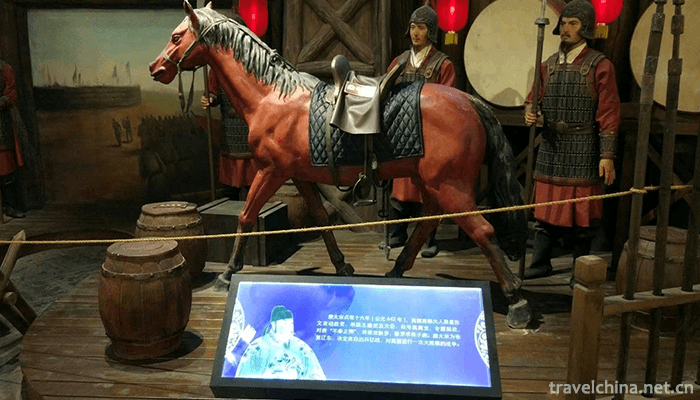
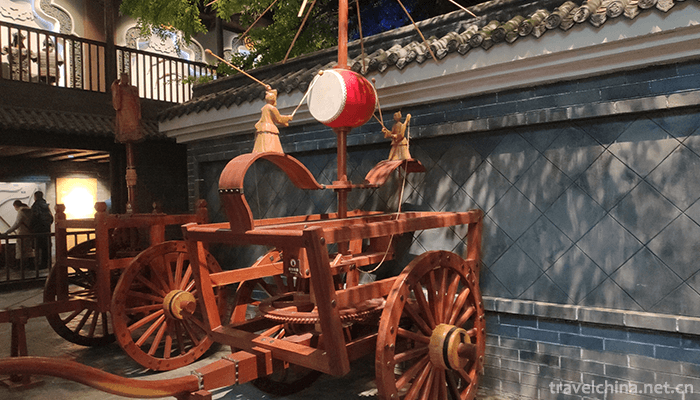
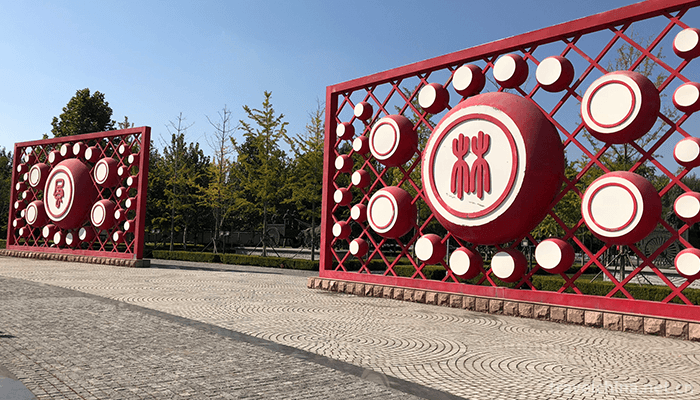
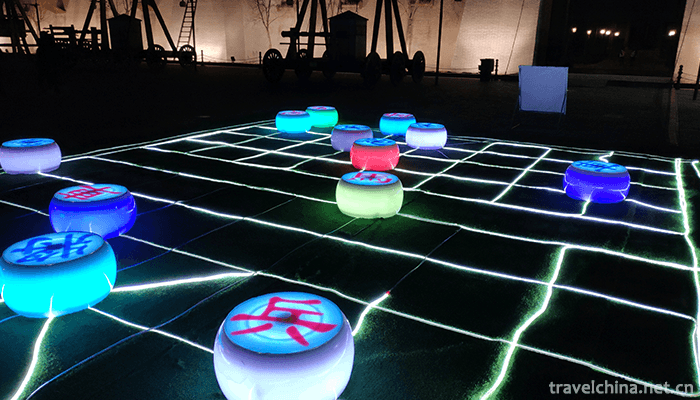
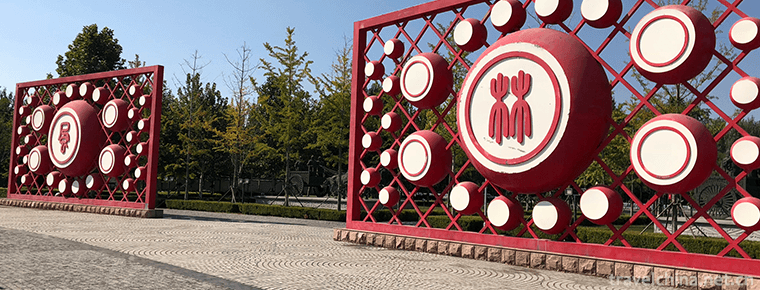
-
1.Pork ribs Noodles
Pork ribs Noodles are a traditional pasta, especially in Cantonese cuisine
Time 2018-10-12 -
2.Fu Ling Rose Crisp
Fuling Rose Crisp is a special traditional snack in Jixi County, Anhui Province. Fuling Rose Crisp is a well-known traditional pastry, which is produced in Fuling Village, Jixi County.
Time 2018-11-27 -
3.Huizhou cake
Huizhou cake, originally named "jujube mud crisp baked bread", is a traditional feature in Huizhou area, Anhui Province.
Time 2018-11-27 -
4.Gui Yuan Temple
Guiyuan Chan Temple is located in Guiyuan Temple Road, Hanyang District, Wuhan City, Hubei Province. It was built by Master Baiguang in the fifteenth year of Shunzhi Qing Dynasty (1658 A.D.). Covering
Time 2019-01-13 -
5.Shenyang Science Centrum
Shenyang Science Palace is located in Wulihe Central Business District, Shenyang District, Liaoning Province. It is a large-scale modern popular science education base in Shenyang District. It was bui
Time 2019-02-08 -
6.Eyes of Tianjin
Tianjin Eye, full name Tianjin Yongle Bridge Tientsin Eye, crossing the Haihe River connecting Hebei and Hongqiao District, is a cross-river construction, bridge wheel in one Ferris wheel, both touris
Time 2019-02-21 -
7.Mongolian Wedding
Mongolian young men and women marry on auspicious days, and men give gifts to women's homes. The gifts include cash, clothes, cloth, jewelry, rice and so on. There are cabinets, bedding, clothes, jewe
Time 2019-06-03 -
8.Talking in North Shaanxi
North Shaanxi storytelling is mainly popular in Yan'an and Yulin in the north of Shaanxi Province. At first, poor and blind people sing some legendary stories in the folk song minor of northern Shaanx
Time 2019-06-13 -
9.She Costume
She nationality's men and women's clothing is basically the same as that of the local Han people. However, the She ethnic costumes in Fujian and Zhejiang provinces with relatively concentrated populat
Time 2019-06-14 -
10.Sachet
Incense bag is also called odor-tolerant, incense bag, incense bag, incense sauce, Pei Mo. Nowadays people call it purse, toy and dim. It is a folk embroidery handicraft created by ancient Chinese wor
Time 2019-07-03 -
11.Jade carving
Jade carving is one of the oldest carving varieties in China. Jade carved into exquisite crafts, known as jade carving. Craftsmen in the production process, according to the natural color and shape of
Time 2019-07-16 -
12.Huainan Normal University
The school was founded in 1958 when it was a teacher's College in Huainan. In 2000, approved by the Ministry of education, the former Huainan normal school, Huainan Education Institute and Huainan nor
Time 2019-11-16